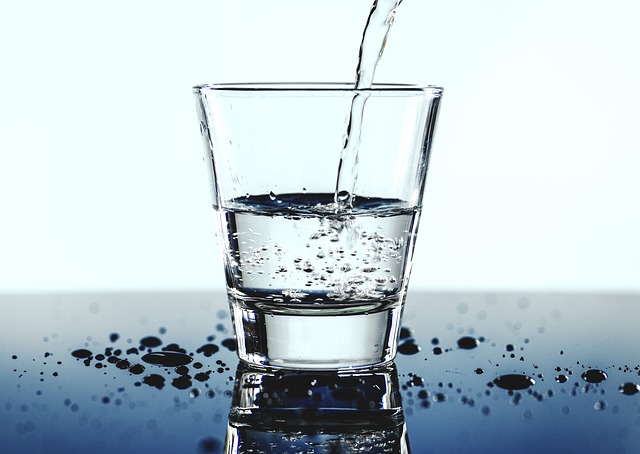Posts by OConnor
Understanding the Spinal Motion Segment
How does my spine move?
We never think of our spine moving- we tend to think of it as a stable pillar that is moved by our body. But in reality, there are millions of micro-movements occurring with every tiny motion you make- everything is channeled through the spine. Thus vertebrae must be able to articulate with each other to allow your upper body to move. So, while the spine is designed for stability, the whole system needs to have some level of flexibility in order for it not to crack from the shearing forces we put it through on a daily basis.
Finding Balance Amidst the Holiday Hustle
Stress goes up, down and all over the place during the holidays
Take a 40-hour/week worker and pile on another 10 hours/week of holiday commitments like myriad dinners with family and friends, parties, and other holiday events. That is the reality for many of us and it is enough to jack our stress levels up even if these are supposed to be relaxing, stress-relieving affairs. So how do we stay centered amidst the holiday hustle? We use techniques to be proactive about stress reduction and the maintenance of our well-being. Here’s how:
Preventing Osteoporosis with the Right Diet
It doesn’t have to be a huge change!
Osteoporosis: bone loss. Osteoporosis: old age. Osteoporosis: not my problem. Few people ever think that osteoporosis will become their fate. Outwardly, there are no symptoms- osteoporosis doesn’t cause pain, nor does it manifest itself in any visible way. Most people never even consider the word until they break a bone and pay a visit to their doctor. The fact is, bone loss is reality for everyone on earth- after our thirties, bone loss begins, and our lifestyles either slow or accelerate this natural process. Diet is the number one way you can control bone loss and prevent weaker bones from causing problems in your life.
In the Moment: Muscle Spasm Management
Muscle spasms happen
It is a brutal reality but the first step to treating a muscle spasm is to accept that it is happening- fighting it is only going to make the problem worse. Take a deep breath and commit to laying low for up to 72 hours (longer in extreme cases).
Step 1 is to ice. Muscle spasms represent a breaking point: what got you here was a set of soft tissue strains and sprains that went unaddressed until they could be borne no longer. In order to prevent a serious injury from occurring, your body goes into spasm. Unfortunately, at this point, a certain degree of injury has already occurred, and the accompanying inflammation is a good indicator of this. So step 1 is to use ice to reduce inflammation in the immediate aftermath of a spasm.
Step 2 is switch to heat. After the inflammation has been reduced and the pain has receded, we need to start the healing process. Heat helps tight tissues relax, encourages blood circulation and brings the nutrients your body needs to heal.
Step 3 is to repair. After the spasms have stopped, you need to gently reintroduce your body to purposeful exercise, with a focus on strengthening the region of injury so that the spasms will not recur.
OFW Means Individualized Healthcare
It all starts with a conversation
What do you need? How does your back feel? How does the condition of your spine affect the way you live your life? These are questions that need to be asked before you can receive truly effective healthcare. In tandem with a full diagnostic and physical examination, a conversation can give us the clues that direct us to getting you the right type of care. Even if that means we need to refer you elsewhere, we are absolutely dedicated to advancing your well-being in the appropriate manner.
Are You Guilty Of Being Chronically Dehydrated?
Dehydration is unacceptable
If you are guilty of a low consumption of fluids, we urge you to take a look at how this affects you in the long run. Dehydration is implicated in a number of conditions which contribute to poor spinal health, including:
- Weight gain
- Drying out of the intervertebral discs
- Muscle spasms
- Mental stress
- Poor blood circulation
Hydrating is one of the easiest things you can do daily to immediately improve your spinal health. This begs the question: why are Americans chronically dehydrated?
Back Pain Prevention for Golfers in Westwood
Golf stresses the spine
Golf is one of the sports for which we treat the most injuries. No matter your age, golf creates a unique system of stress for the spine. The swing itself requires an enormous amount of power generation respective to the body, with the torsion of the hips and the downward force of the shoulders. Throughout a day on the course, you are doing a fair bit of bending, lifting and twisting and all of these are unnatural motions for the spine. That means that you need to be proactive about preventing injury on the golf course.
Lifting With Your Brain to Avoid Back Injuries
Lifting with your brain: what does it mean?
At its core, it means being more mindful about your spine when performing daily activities. Unless you were raised under a rock, you probably heard the phrase: “lift with your legs, not your back.” Yet how many of us continually ignore this wisdom, and lift with a motion that may save us a few seconds, but risks our spinal health unnecessarily. Anyone with a spinal condition or back pain will tell you that lifting is one of the most painful motions they can undertake- it is in your best interest to avoid this pain at all costs. So step one is being more mindful about how you lift, and not ignoring that ubiquitous wisdom after all.
When to Worry About a Stiff Neck
Stiff necks are ubiquitous in adult populations
Aging and lifestyle are traditionally to blame- white collar office jobs have contributed to more hours spent with poor, forward head posture than ever before. Then you add in the technology wave that has brought us to rely on cell phones for communication and entertainment and the recipe thickens: our necks are now up against it more than ever. And while a stiff and sore neck is certainly annoying, we are often able to ignore it and get on with our day. Some of us may even stretch to momentarily alleviate tension, but the underlying cause of the stiffness and soreness will remain, unless we are more proactive about preventing it. But what if your sore neck is sending a warning sign that you aren’t seeing? Here’s how to know when a stiff neck could be a serious problem.
Why Choosing Natural Pain Relief Matters
The natural pain relief advantage
No matter who you are, you can’t afford pain. From a lingering ache to a debilitating disc injury, pain is going to take its toll on your life. That’s why pain relief is such a huge field within modern medicine (and such a major arm of the pharmaceutical industry). And while pain relieving medications are indispensable to some, others become gripped by their addictive properties and find themselves at the mercy of myriad side-effects. What’s more, a painkiller is only a mask- it doesn’t actually resolve anything. It simply treats the symptom (pain) so that you can get on with your life. From a wellbeing perspective, this is very important. But natural pain relief takes a different approach: it seeks to resolve the source of the symptoms, thereby creating more profound, permanent changes that will offer longer-term pain relief.










